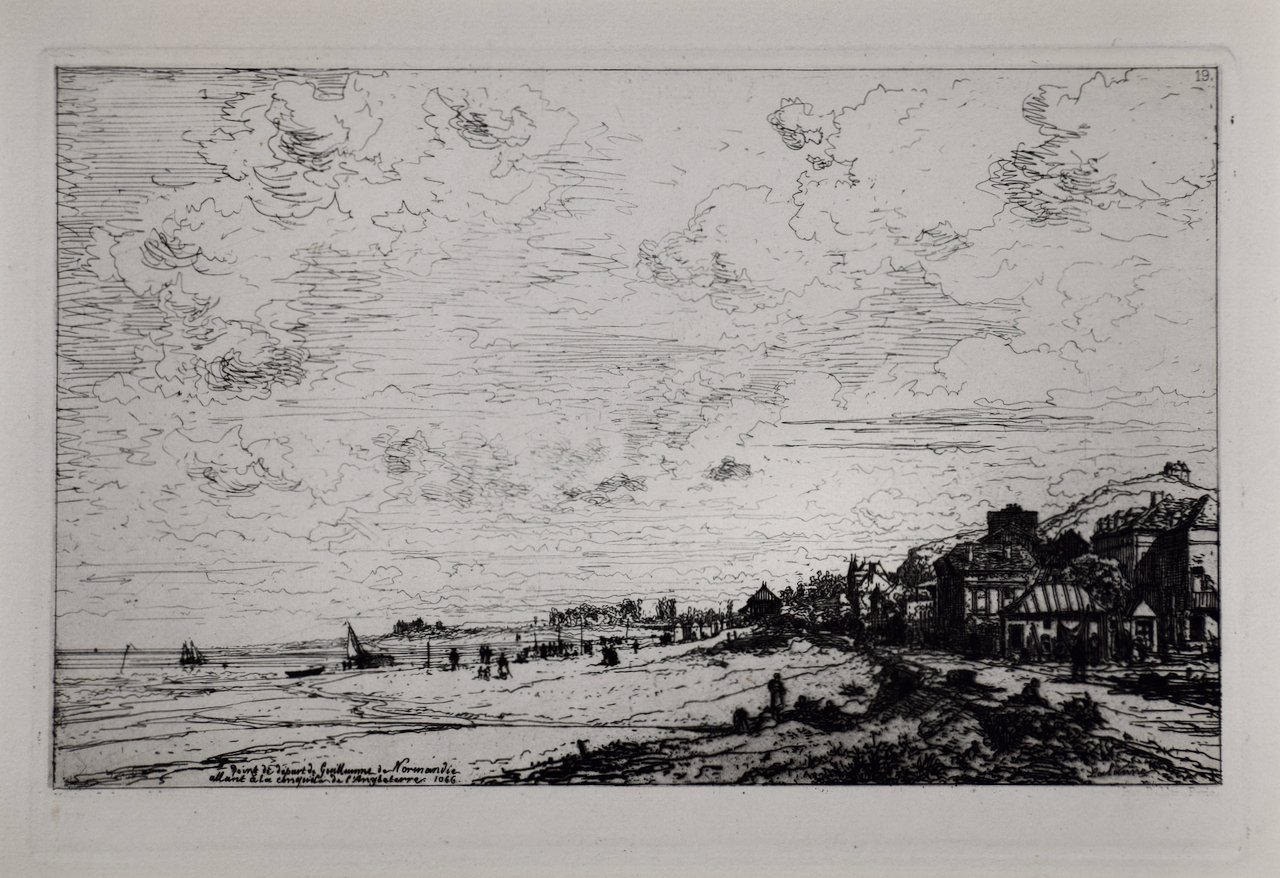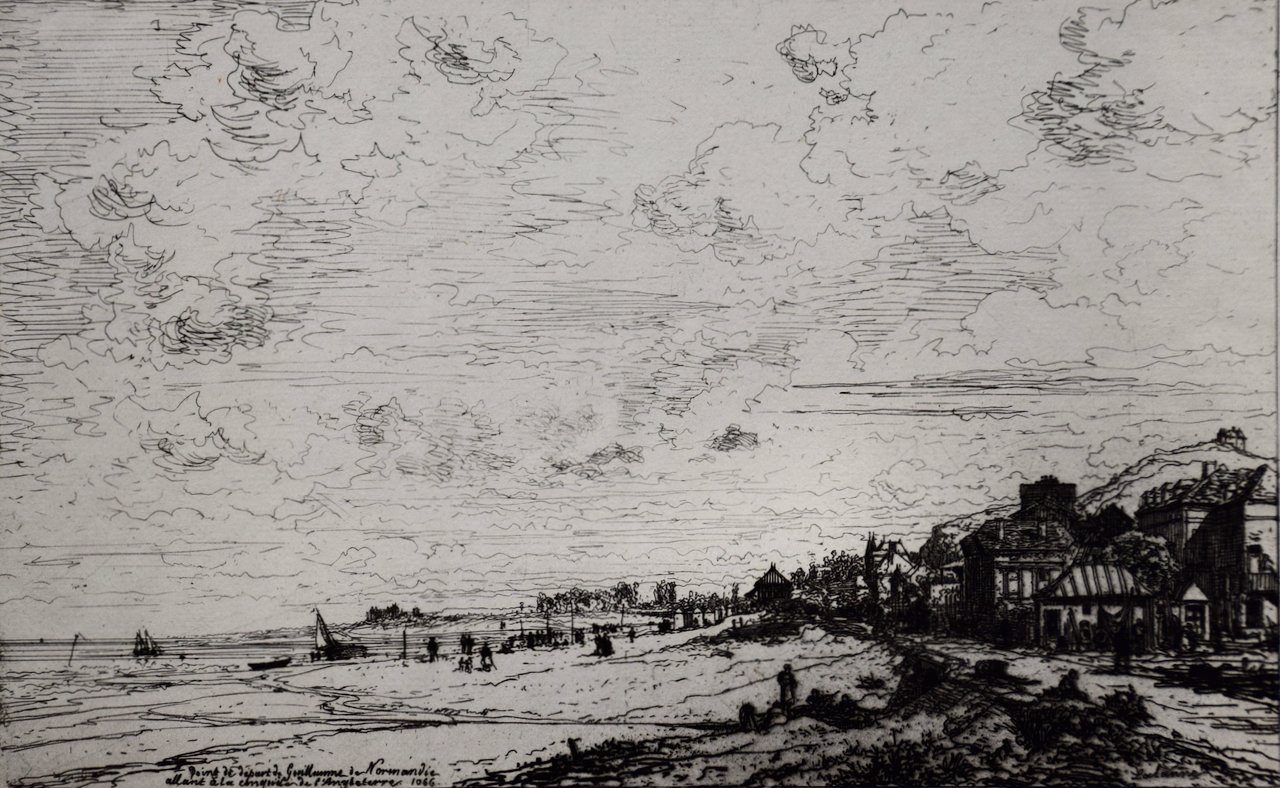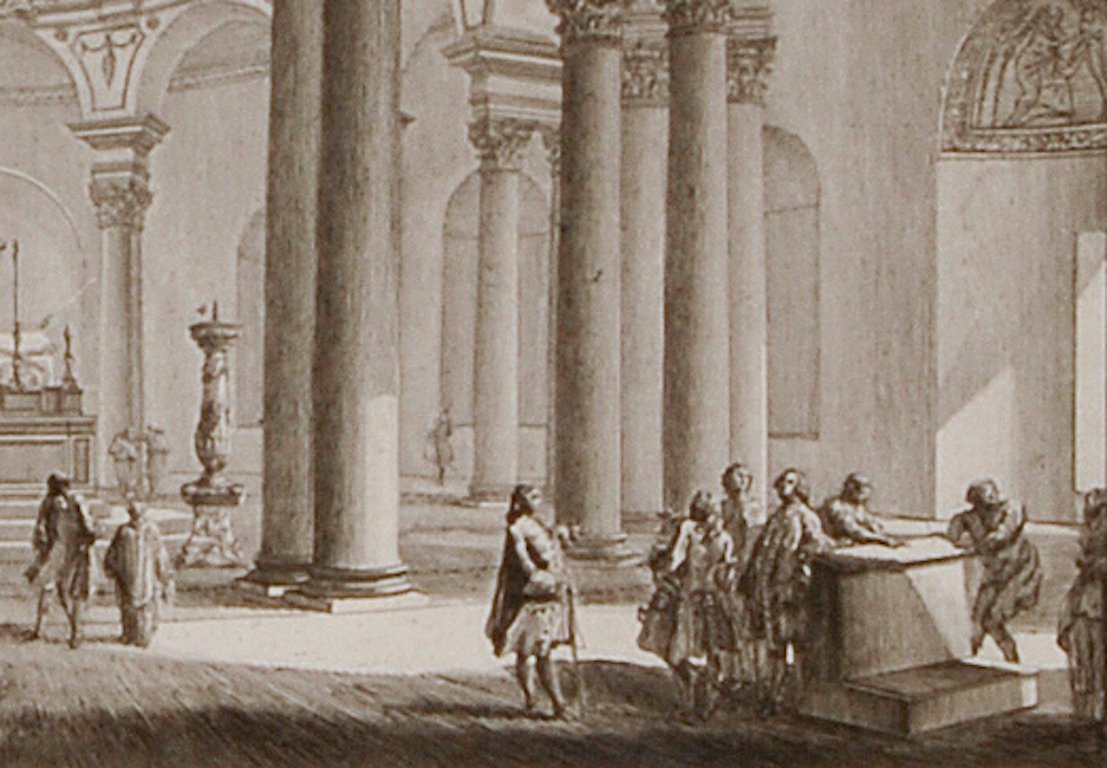The Beach in Normandy, France, Near Bayeux: A 19th C. Etching by Maxime Lalanne
This is a mid 19th century etching entitled "Point de Depart de Guillaume de Normandie, Beuzeval, Emboucher de la Dives Calvados (The point of departure of William of Normandy (William the Conqueror)), created by Maxime Lalanne and published in 'L'Illustration Nouvelle' in 1868 by Alfred Cadart. The etching depicts the beach at Beuzeval in Normandy; with the shore in the foreground on the right lined by a row of houses, the sea at the left, and an expansive sky above. There are people on the beach and sailboats in the water. This is the point of departure of William the Conqueror for his voyage to England in 1066, resulting in his victory over the Anglo-Saxons at the Battle of Hastings and the establishment of Norman rule. The events are memorialized in the Bayeux tapestry, created by William's wife.
Creator: Maxime Lalanne (1827 - 1886, French)
Creation Year: 1868
Dimensions: Height: 9.5 in (24.13 cm)
Width: 12.75 in (32.39 cm)
Medium: Etching
Condition: See description below.
Reference #: 1818
This is a mid 19th century etching entitled "Point de Depart de Guillaume de Normandie, Beuzeval, Emboucher de la Dives Calvados (The point of departure of William of Normandy (William the Conqueror)), created by Maxime Lalanne and published in 'L'Illustration Nouvelle' in 1868 by Alfred Cadart. The etching depicts the beach at Beuzeval in Normandy; with the shore in the foreground on the right lined by a row of houses, the sea at the left, and an expansive sky above. There are people on the beach and sailboats in the water. This is the point of departure of William the Conqueror for his voyage to England in 1066, resulting in his victory over the Anglo-Saxons at the Battle of Hastings and the establishment of Norman rule. The events are memorialized in the Bayeux tapestry, created by William's wife.
Creator: Maxime Lalanne (1827 - 1886, French)
Creation Year: 1868
Dimensions: Height: 9.5 in (24.13 cm)
Width: 12.75 in (32.39 cm)
Medium: Etching
Condition: See description below.
Reference #: 1818
This is a mid 19th century etching entitled "Point de Depart de Guillaume de Normandie, Beuzeval, Emboucher de la Dives Calvados (The point of departure of William of Normandy (William the Conqueror)), created by Maxime Lalanne and published in 'L'Illustration Nouvelle' in 1868 by Alfred Cadart. The etching depicts the beach at Beuzeval in Normandy; with the shore in the foreground on the right lined by a row of houses, the sea at the left, and an expansive sky above. There are people on the beach and sailboats in the water. This is the point of departure of William the Conqueror for his voyage to England in 1066, resulting in his victory over the Anglo-Saxons at the Battle of Hastings and the establishment of Norman rule. The events are memorialized in the Bayeux tapestry, created by William's wife.
Creator: Maxime Lalanne (1827 - 1886, French)
Creation Year: 1868
Dimensions: Height: 9.5 in (24.13 cm)
Width: 12.75 in (32.39 cm)
Medium: Etching
Condition: See description below.
Reference #: 1818
This etching is presented in a white mat that is suitable for framing. This excellent impression is printed on thick chain-linked, laid cream-colored paper with wide margins. It is signed in plate in the lower right and titled in the plate in the lower left. There is a collector's stamp (either an "NC" or a "CN") in the lower right corner. The sheet measures 9.5" high by 12.75" wide and the mat measures 13.5" high by 16" wide. There are two tiny faint spots in the periphery of the upper margin, but the print is otherwise in excellent condition. This etching is held by many museums and institutions, including The British Museum, The Yale University Art Gallery, The Cleveland Museum of Art, The Philadelphia Museum of Art, Columbia University Libraries and The William Morris Gallery in London.
François Antoine Maxime Lalanne (1827-1886) was a leading French etcher and painter of landscapes and urban views, who was at the forefront of the French revival of etching during the 1860's. He grew up in Bordeaux, but he refined his artistic skills and worked in Paris. His art was first exhibited at the Paris Salon in 1852 and he continued to regularly show both etchings and paintings there until the mid 1880's. He was also the author of several important books on the subjects of etching and other graphic arts. He was a founding member of the Societe des Aquafortistes, along with Auguste Delatre, Cadart, Ribot and Bracquemond. Lalanne created over one hundred and fifty fine etchings. Lalanne's unique style of art influenced many French and English artists in the twentieth century.









































